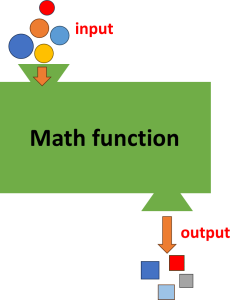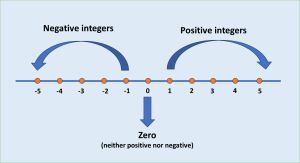I

Audio
Listen to an audio version of this page (58 sec):
Inequality
|
patos akītewa |
|
Definition: A mathematical statement indicates that two quantities (or expressions) are not balanced [1].
Examples
- [latex]12>3[/latex]
- [latex]x<4[/latex]
- [latex]7≠5[/latex]
Input
|
ascikīy |
|
Definition: It is a term related to functions. What goes into the function is called input and what comes out is called output.

Integer
|
kīci-akīta sona |
|
Definition: An integer is a whole number that can be positive, negative, or zero.

Inverse
|
kwȇski akītason |
|
Definition: An element of a set that gives the identity element when combined with another given element [4].
Examples
- [latex]-5[/latex] is the inverse of 5 with respect to addition
- [latex]\frac{1}{5}[/latex]is the inverse of 5 with respect to multiplication

